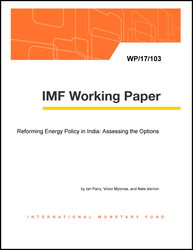
Reforming Energy Policy in India
Assessing the Options
Spreadsheet models are used to assess the environmental, fiscal, economic, and incidence
effects of a wide range of options for reducing fossil fuel use in India. Among the most effective
options is ramping up the existing coal tax. Annually increasing the tax by INR 150 ($2.25) per
ton of coal from 2017 to 2030 avoids over 270,000 air pollution deaths, raises revenue of
1 percent of GDP in 2030, reduces CO2 emissions 12 percent, and generates net economic
benefits of approximately 1 percent of GDP. The policy is mildly progressive and (at least
initially) imposes a relatively modest cost burden on industries.
Publication date: May 2017
ISBN: 9781475595734
$18.00
Add to Cart by clicking price of the language and format you'd like to purchase
Available Languages and Formats
| English |
Prices in red indicate formats that are not yet available but are forthcoming.
Topics covered in this book
This title contains information about the following subjects.
Click on a subject if you would like to see other titles with the same subjects.
Air pollution deaths , Paris targets , welfare effects , incidence , coal tax , energy price reform , Government Policy , Environmental Economics: Government Policy
Summary
Copyright © 2010 - 2024
Powered by:
AIDC



